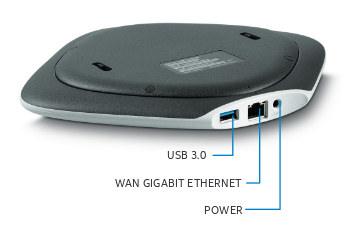Intel has introduced a new device that stores, manages, and publishes digital content for schools with low or intermittent connectivity and /or power. The device stores training materials in its internal storage, comes with a battery, and can be accessed by up to 50 students simultaneously.
Specifications:
- SoC – Intel Atom Bay Trail-I E3815 Processor @ 1.46GHz with Intel HD graphics
- System Memory – 2GB DDR3L-1067
- Storage – 8GB eMMC, Optional 500GB SATA HDD
- Connectivity – WiFi 802.11 a/b/g/n/ac, Wired Gigabit Ethernet, Optional 3G, Optional LTE
- USB – 1x USB 3.0
- Misc – System and 3G/LTE LEDs, Factory reset and power buttons
- Power Supply – 12V/2A
- Battery – Lithium-ion polymer 7.4v, 4050mAh (up to 5 hours of battery life)
- Dimensions – 190 x 190 x 30mm
- Weight – 607 grams
 The system runs Ubuntu 12.04. The optional 500GB hard drive includes 400GB of preloaded content, and educator can use the remaining 100GB to add their own content via the USB 3.0 port.
The system runs Ubuntu 12.04. The optional 500GB hard drive includes 400GB of preloaded content, and educator can use the remaining 100GB to add their own content via the USB 3.0 port.
Price and availability details have not been released by Intel. You may want to check out Intel Education Content Access Point product page for a few more details.

Jean-Luc started CNX Software in 2010 as a part-time endeavor, before quitting his job as a software engineering manager, and starting to write daily news, and reviews full time later in 2011.
Support CNX Software! Donate via cryptocurrencies, become a Patron on Patreon, or purchase goods on Amazon or Aliexpress





